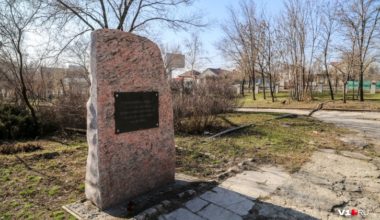On April 20, 2020, the Russian Investigative Committee, or Sledkom, said it was launching all necessary legal procedures to verify a suspected criminal case, based on the elements of the crime provided for by Article 357 of the Russian Criminal Code (“Genocide”). The verification procedure would deal with the events that developed in Karelia at the time of the Finnish occupation in 1941—44, Sledkom stated.
‘The now declassified documents of the Office of the Federal Security Bureau of the Republic of Karelia, regarding the elimination of Slavic POWs and civilians in concentration camps on the Soviet territory, which were built on the territory of the present Republic of Karelia during the Great Patriotic War by Finnish occupation authorities, are under investigation,’ the official statement by Sledkom read. ‘ According to former concentration camp prisoners, the living conditions, as well as nutrition and labor standards in such camps were incompatible with life, leading to thousands of deaths in the camps during the period of occupation, among them underages and young children. The Committee will study the declassified materials, carry out a number of legal checks of the activity of Finnish occupiers and their proxies regarding Soviet civilians, and produce the proper legal judgment.
‘No action based on the criminal ideology of racial superiority and misanthropy must be left unpunished even after decades,” the Committee stated.
From 1941 till 1944, the most part of the Karelo-Finnish SSR of the Soviet Union was under Finnish military occupation. The Finnish occupation authorities carried out a policy of racial segregation and ethnic cleansing; to isolate the so-called “non-national” (or non-Finno-Ugrian) population on the occupied territories, concentration camps for civilians were built. According to the monograph by historian Sergey Verigin from Petrozavodsk State University there were around 24,000 prisoners in concentration camps for civilians, or 50 percent of the Slavic population of the occupied territory, early in April of 1942. In total, historians now speak of an estimated 30,000 people who went through Finnish civilian concentration camps, including women, children and the elderly. 4,000 prisoners died of hunger, according to Finnish sources. Soviet sources refer to a much higher figure of 7,000.
Declassifying documents describing crimes committed by Finnish occupiers stored in the Karelian FSB Directorate was launched no later than in 2019. In October 2019, some of those documents, together with memoirs of former Finnish camp prisoners were published at the RIA Novosti news agency website.


